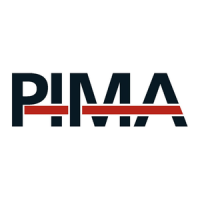Hunter-Pro Series Captain 8 - Installation Guide
20
Technical specs
Operating voltage: 12V
Current consumption: 18~25 mA
RFID standard: EM-4100
Humidity: 75%, relative, non-condensed
Temperature: ~ -10
+ 45
o
C
1.5.13. Key switches and zones
The KEY terminal serves as an input for key switches and keyfobs.
“KeySw Arm”, “KeySw Home 1” and “KeySw Home 2” are key zone types, for arming the
system to full, “Home 1” and “Home 2” modes, respectively. These zone types preserve most of
the KEY input functionality. See details ahead.
As any zone type, the KeySw zone types can be allocated per partition. The KEY terminal and the
KeySw zones can be triggered by momentary or toggle keys. The default is momentary see 8, on
page 62.
To use the KEY input, connect the key switch/key fob between the KEY terminal and GND (-).
Diagram 15. Key switch wiring
Keyswitch zone types features
The Keyswitch zone types can only be used for arming and only with a key switch/fob
The Keyswitch zone types have no other zone response but arming
Key Switch zones can be hardwired (include. zone doubling) or wireless
Triggering Keyswitch zones cannot be indicated by the keypad chime
Tested (soaked) Key zones do report to the Central Monitoring Station when triggered
Subject to the user settings, Keyswitch can be bypassed by users
Keyswitch can be set as N.O. or N.C. and have EOL resistor loops
Only monitored keypads display the exit delay countdown, when arming via a Keyswitch zone
SMS messages reporting on arming via a Keyswitch zone, do not contain the zone name
The log displays only the first 8 characters of Keyswitch zones’ names
Keyswitch zones cannot trigger any output type
“Automatic zone bypassing” is not affected when arming via Keyswitch zones
Keyswitch zones have no sensitivity or responses to configure
Control Panel
Key switch
)-(
-
+
K
E
Y
-
I
n
t
S
I
R
E
N
S
E
x
t
Z
8
(-)
KEY

